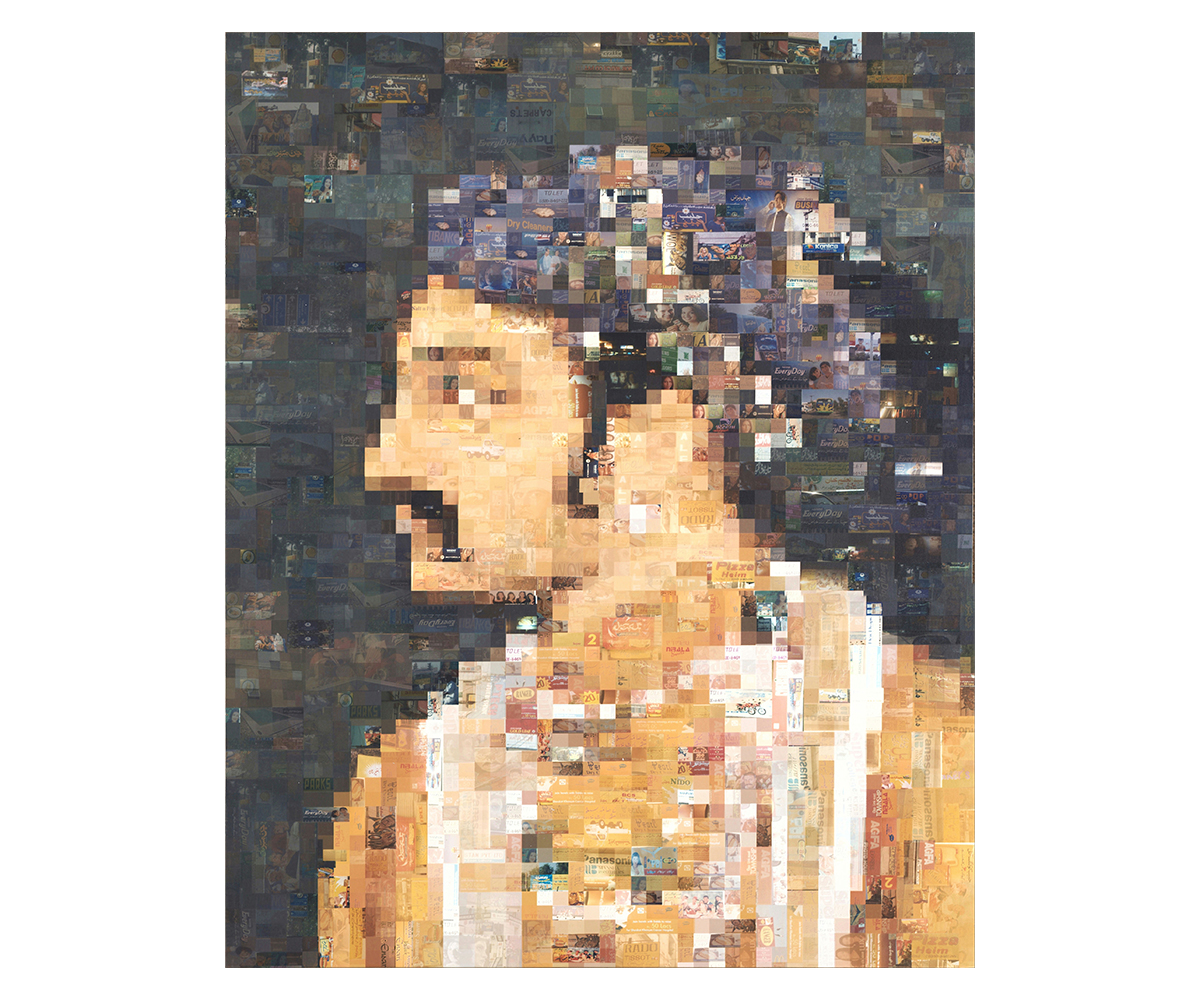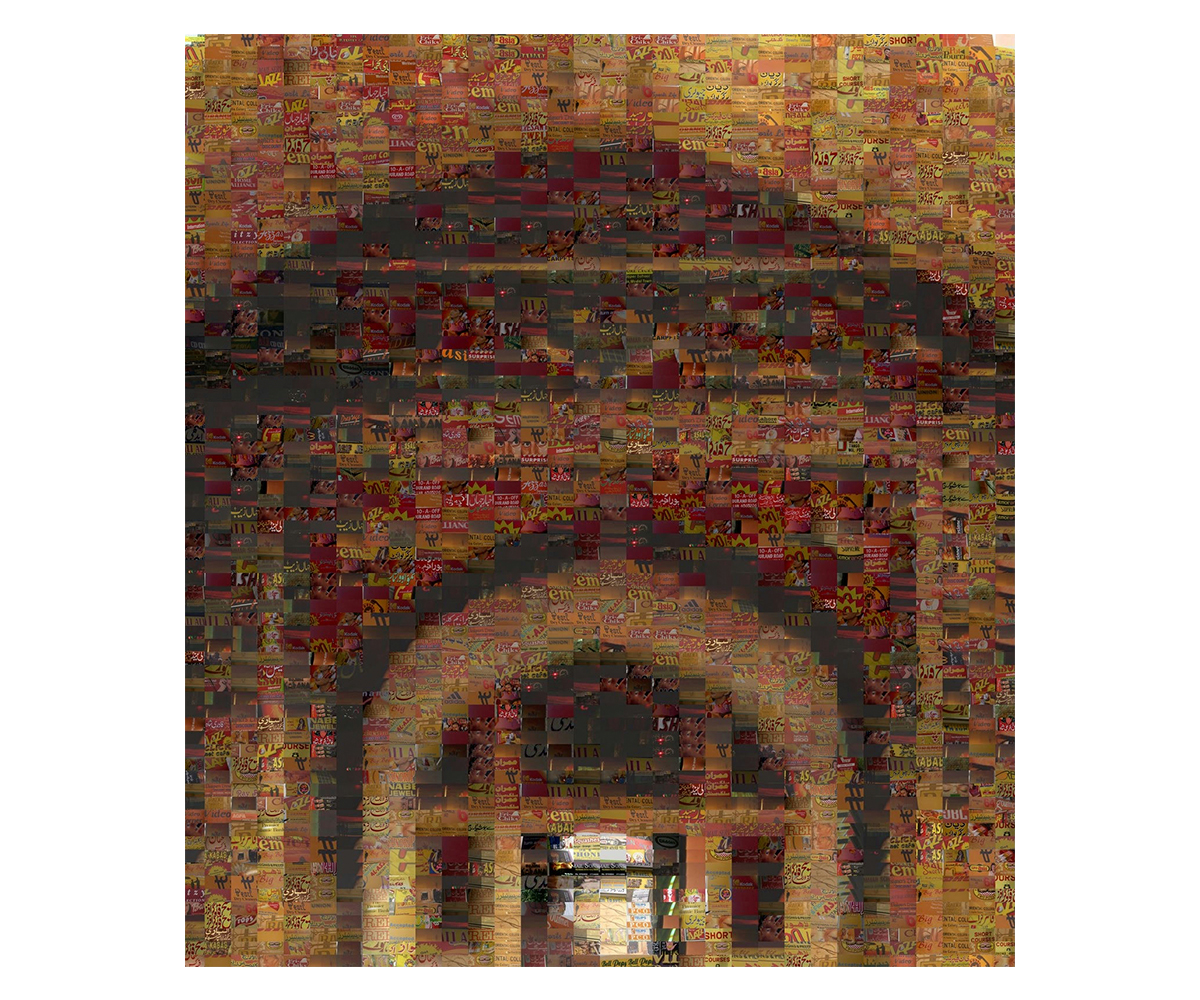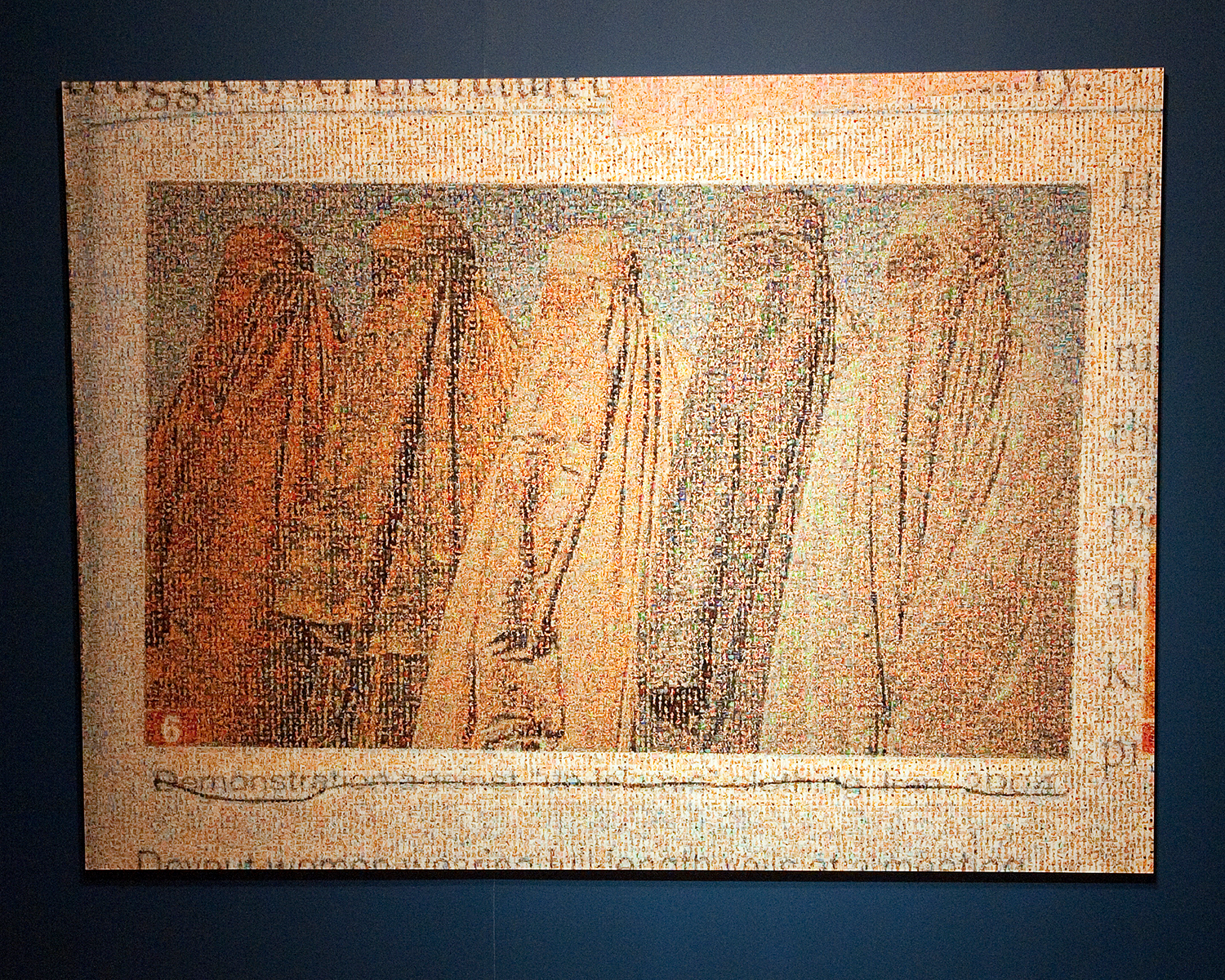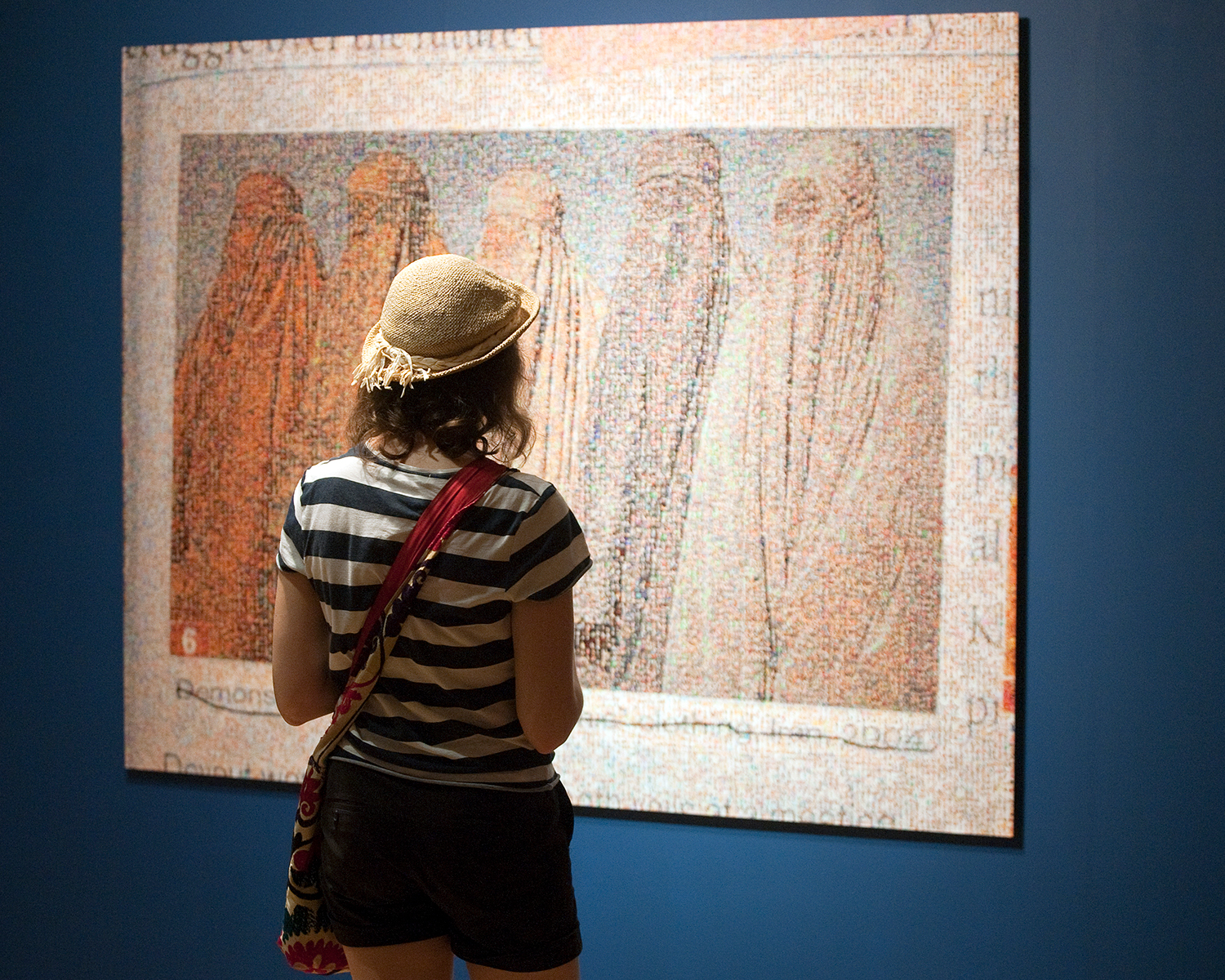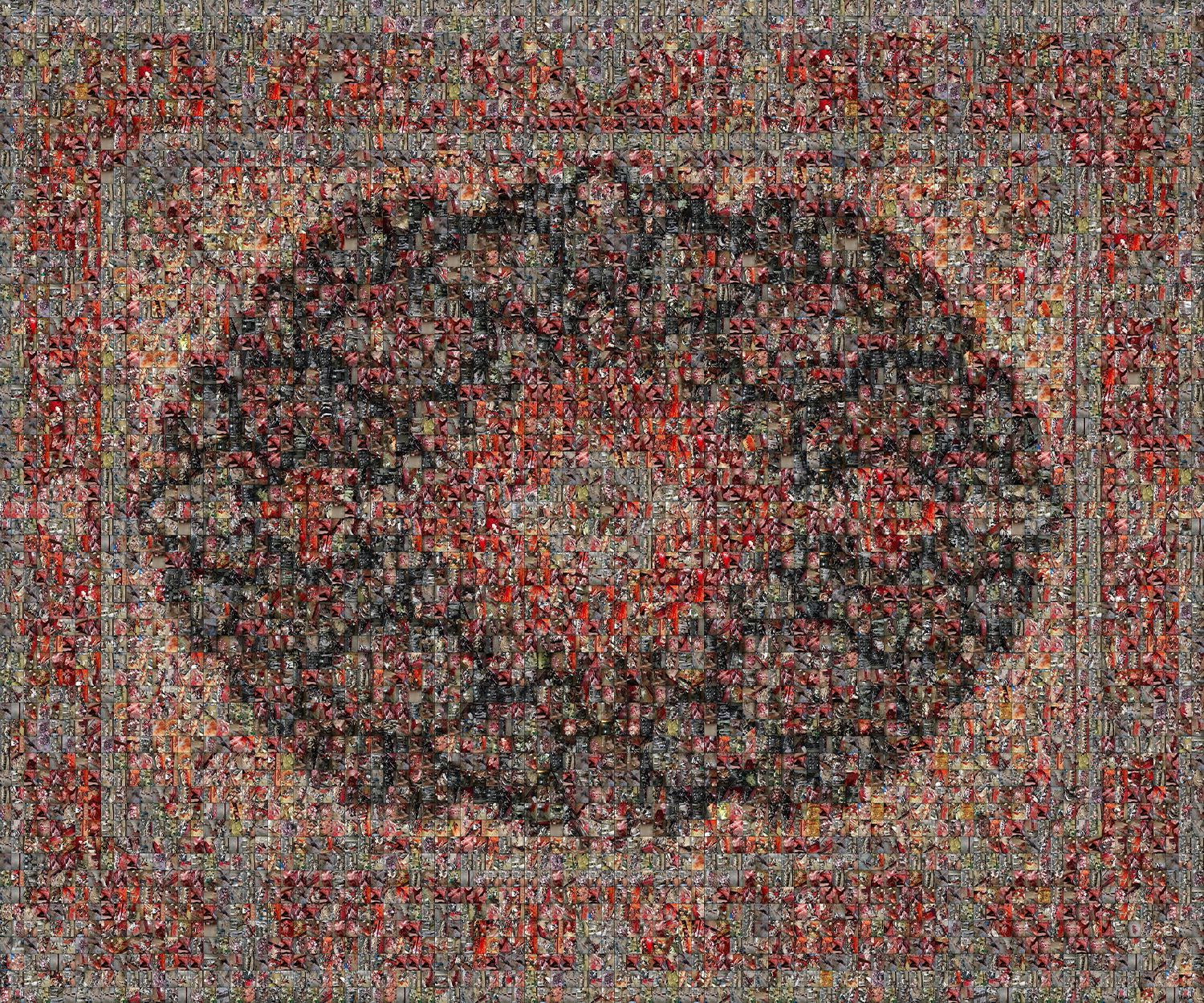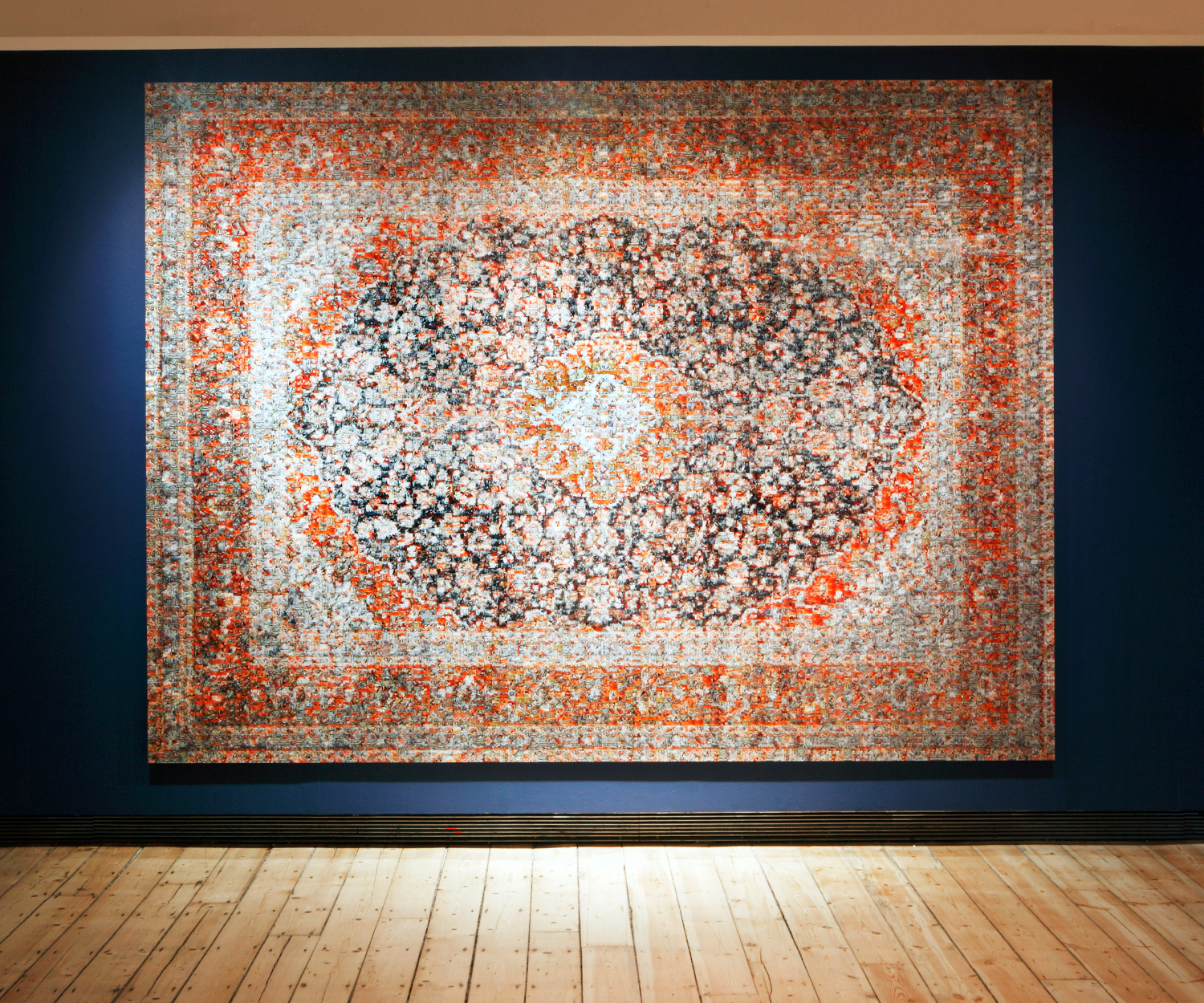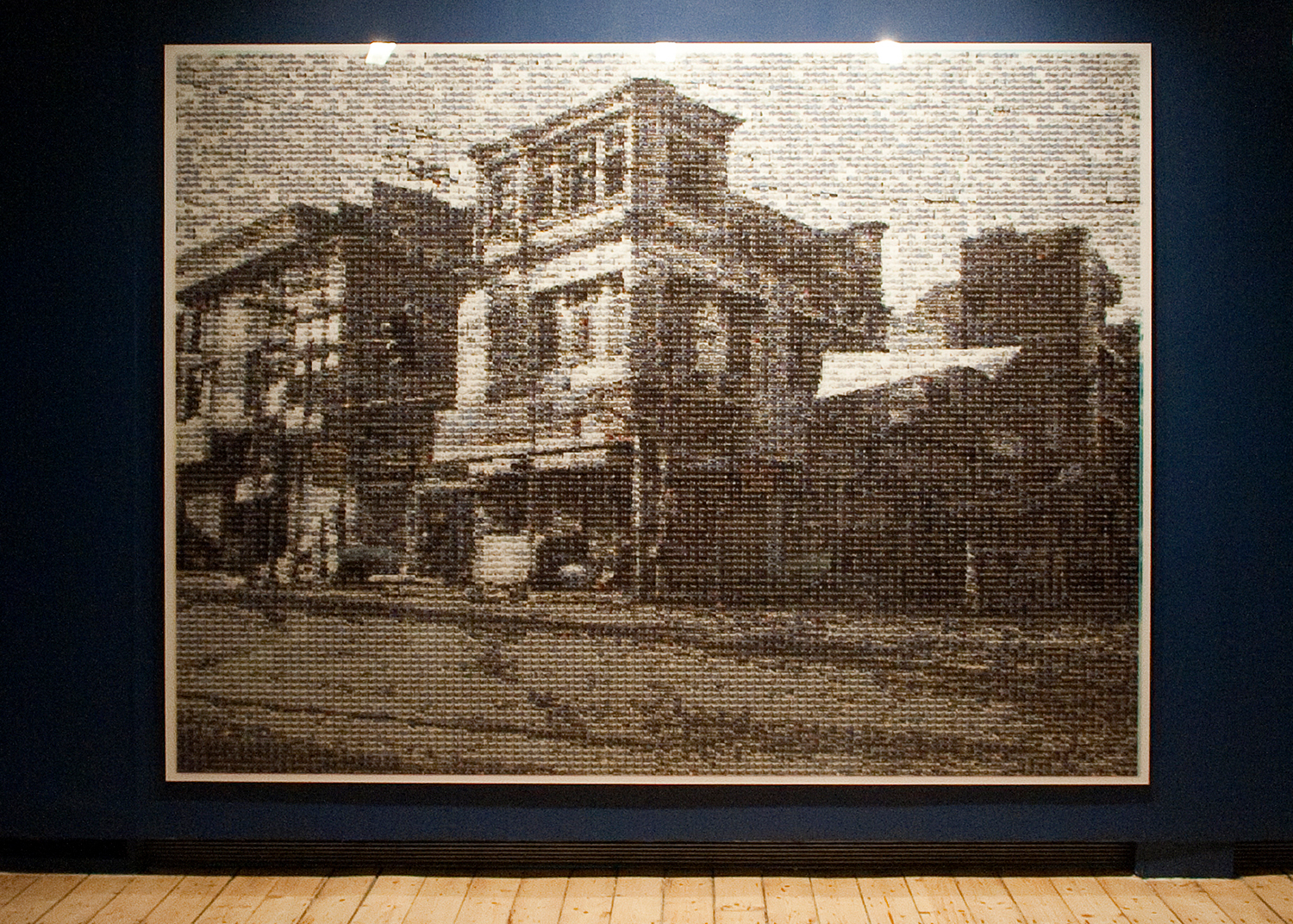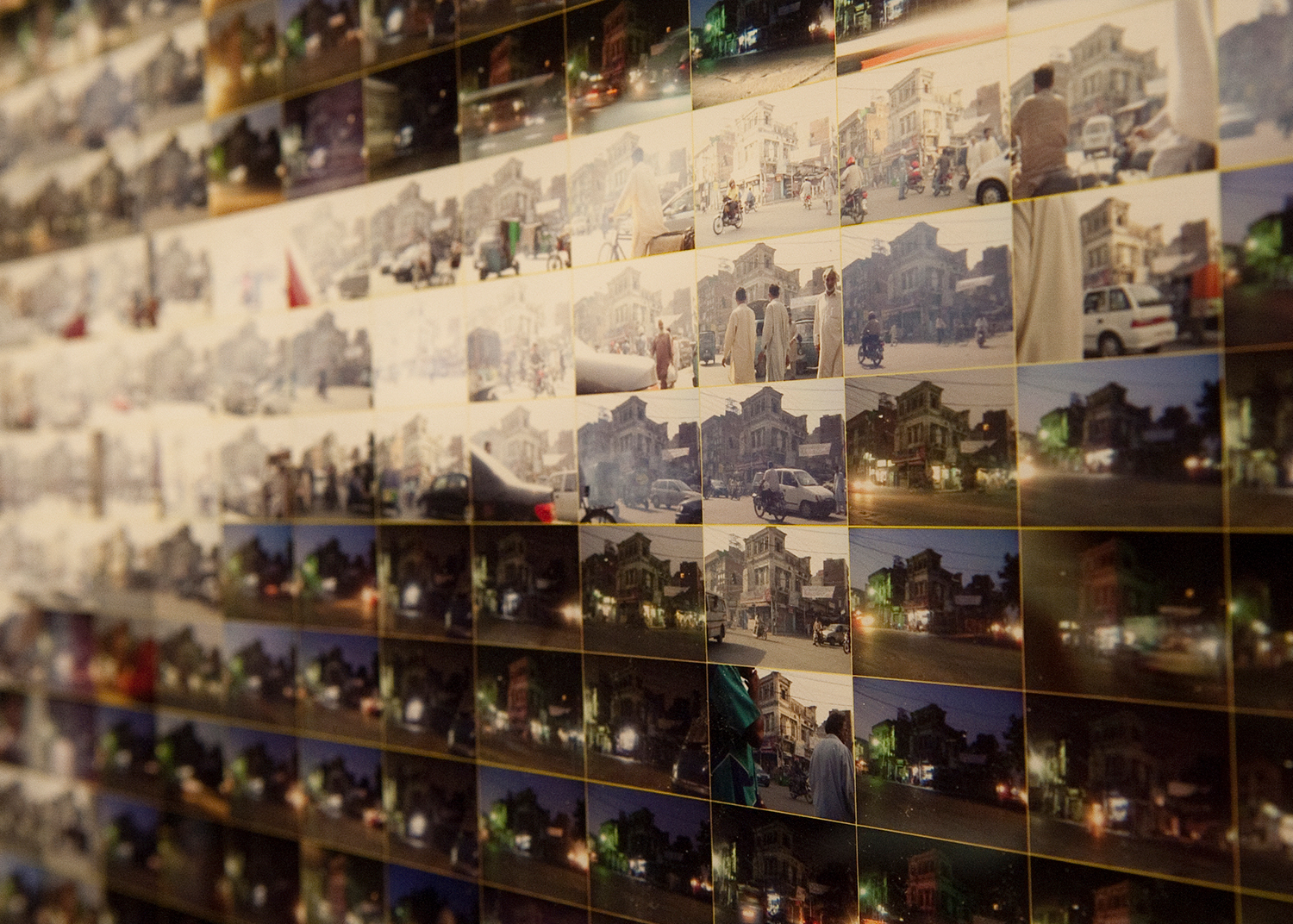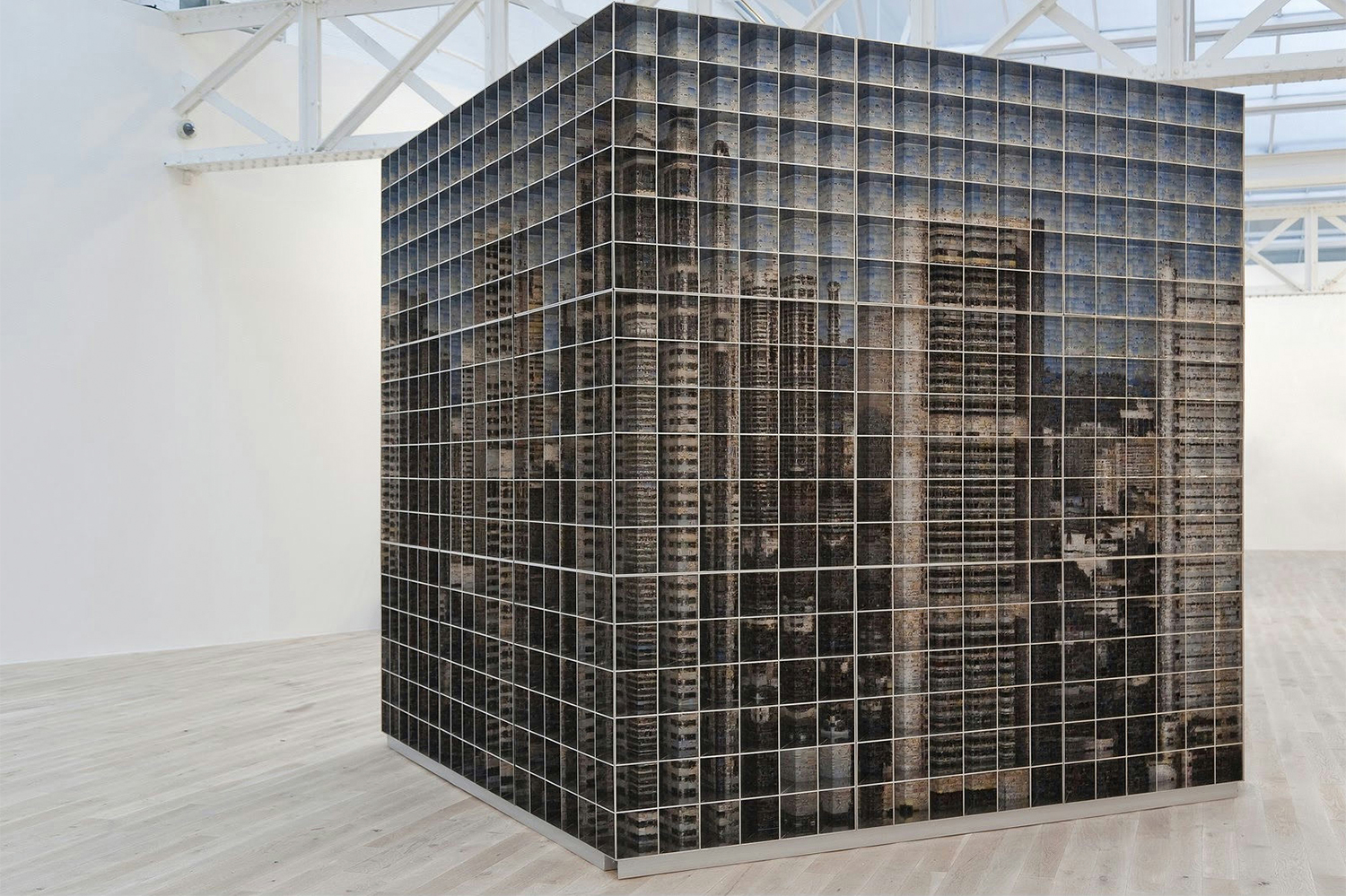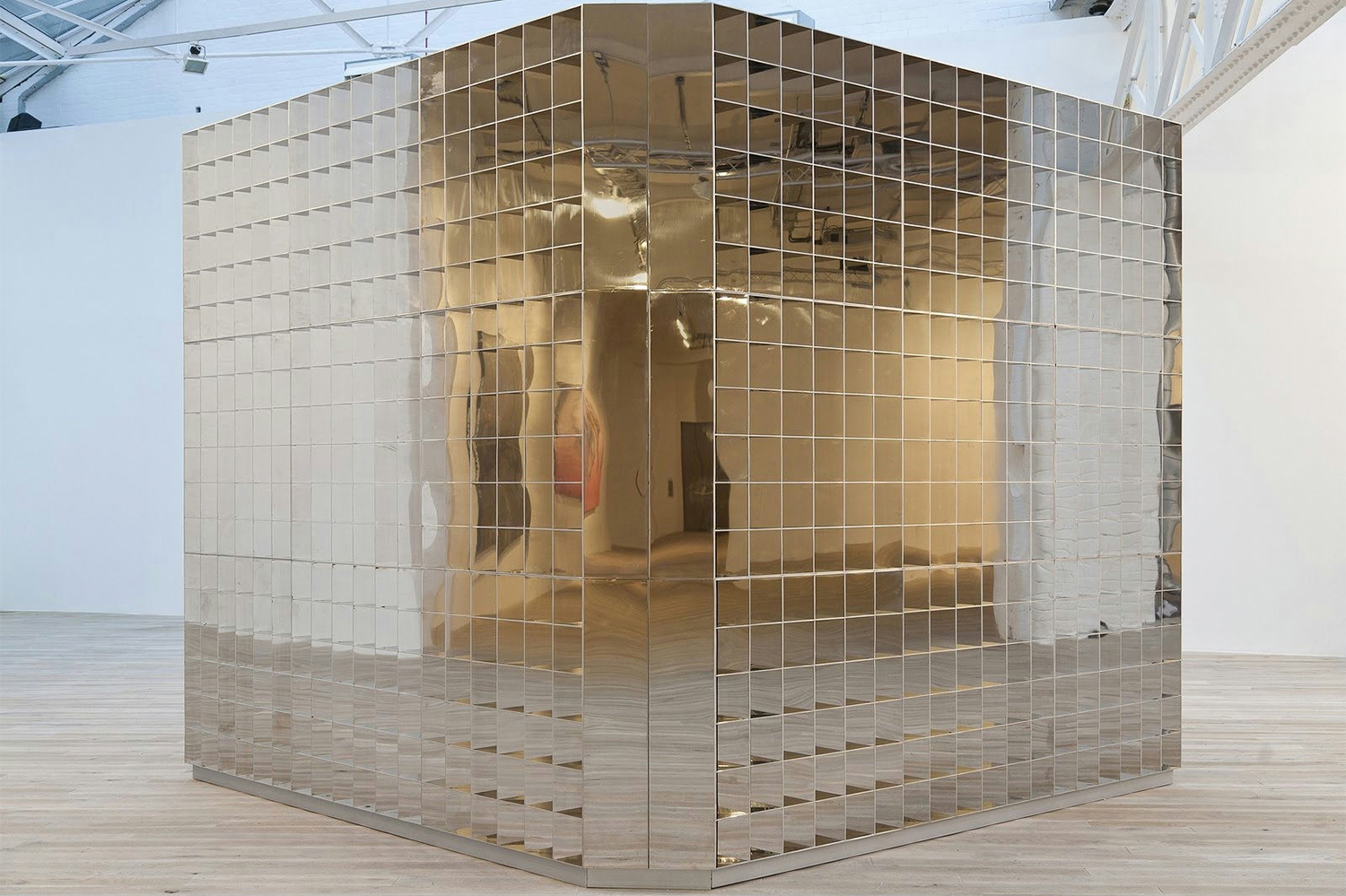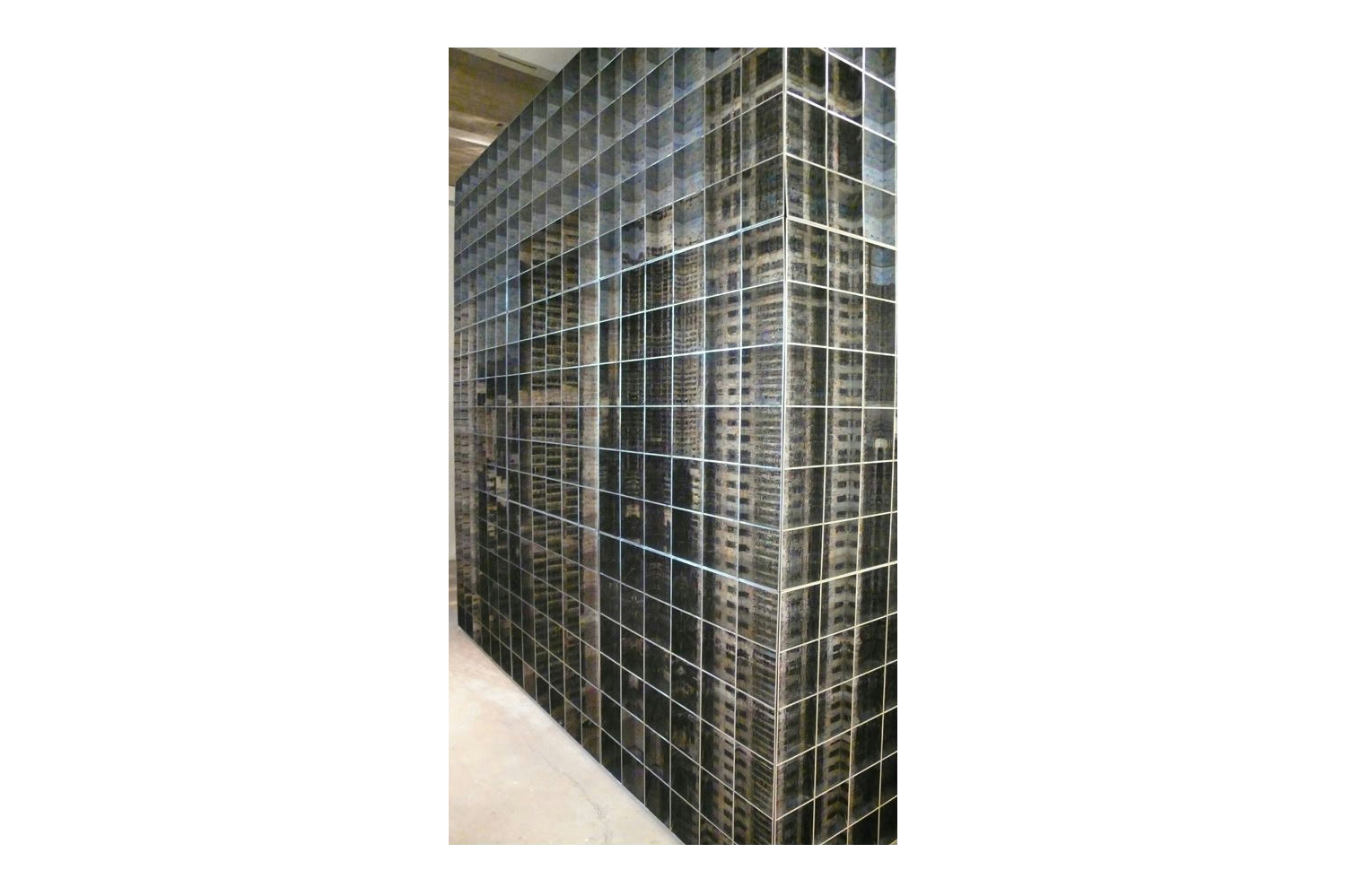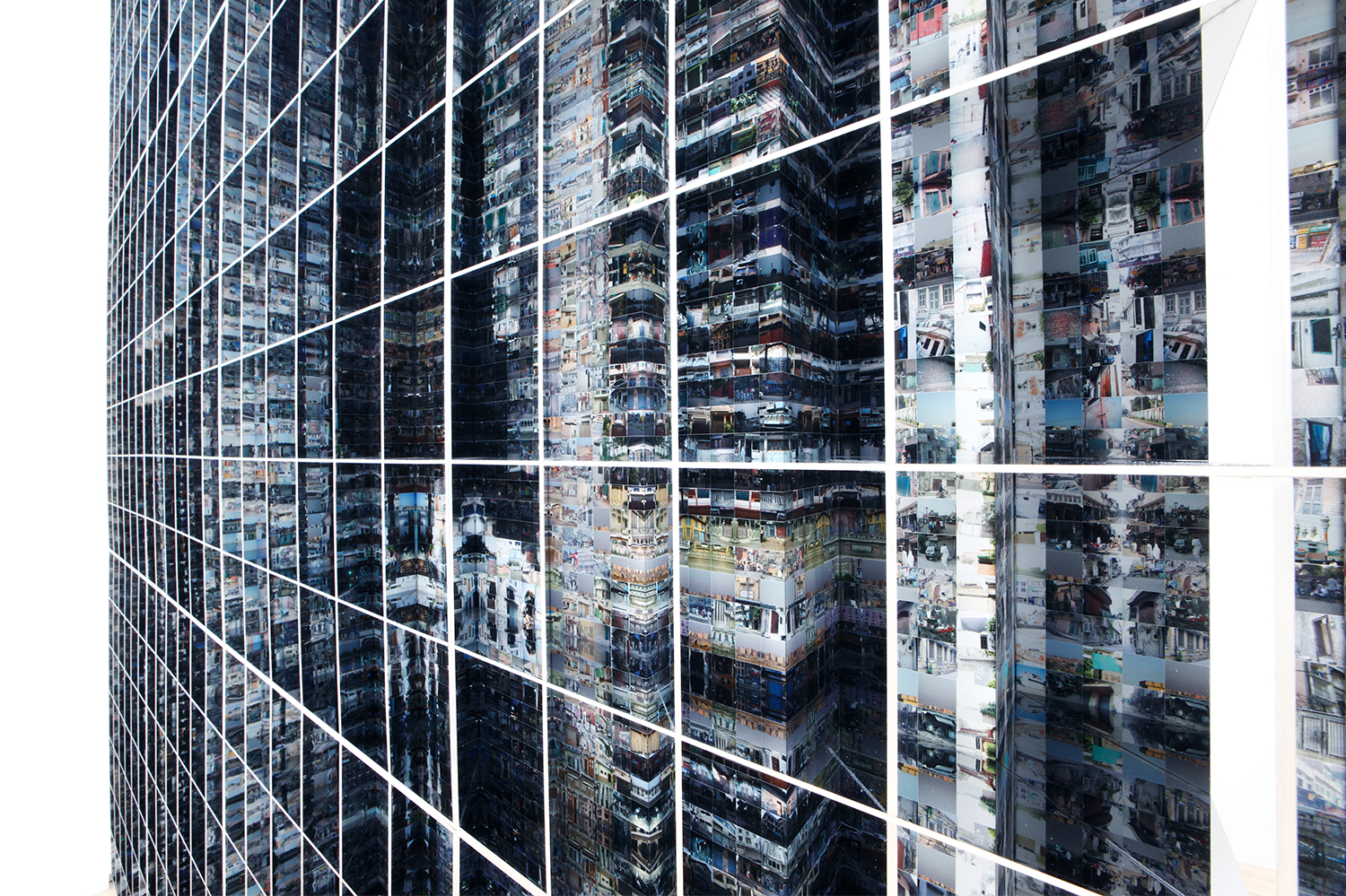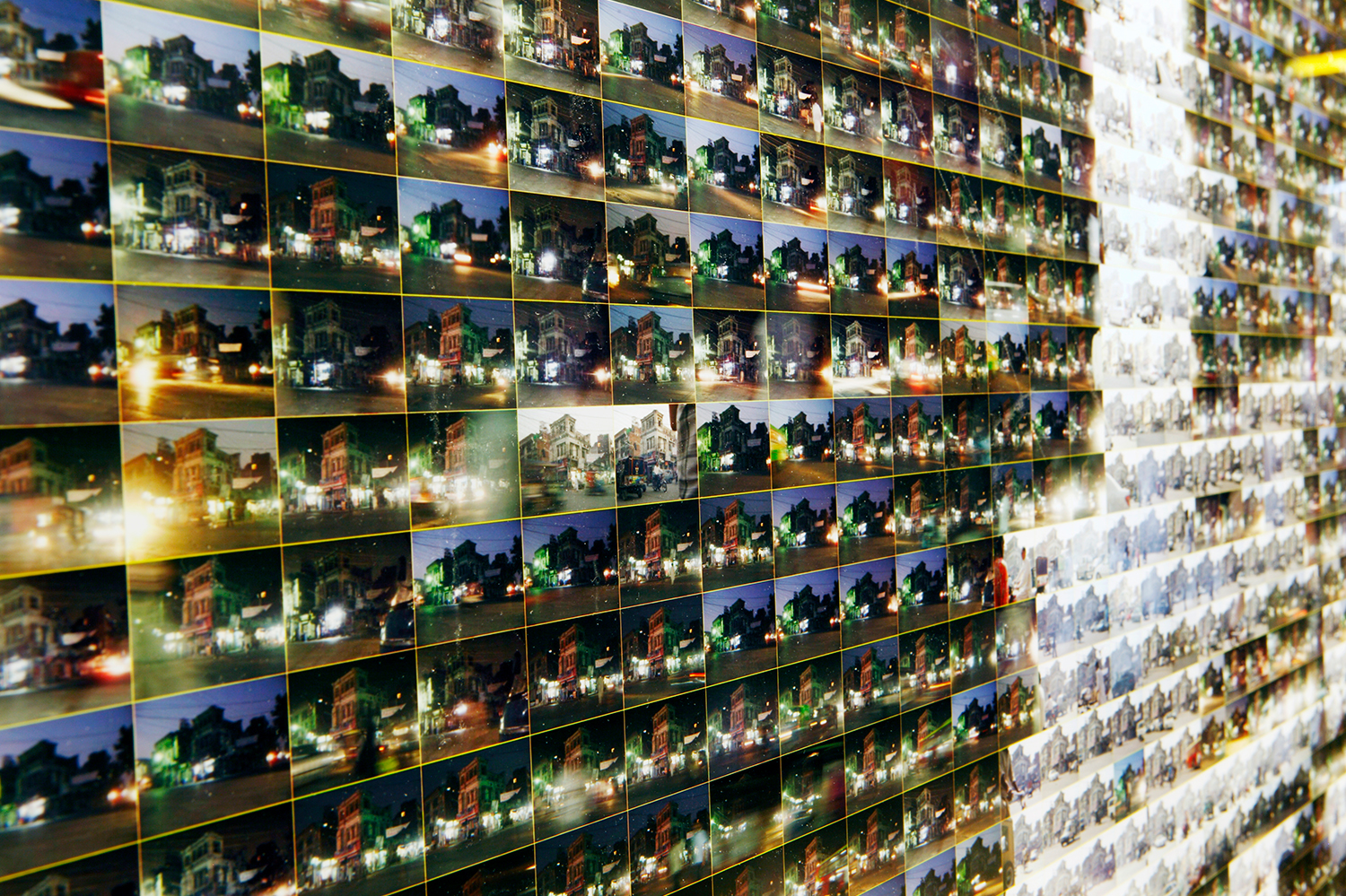ARTICLE
Rashid Rana (b. 1968)
A Pakistani contemporary artist, Rashid Rana is best known for his work with photomosaics and photomontages, which explore various contradictions through the juxtaposition of ideas and visuals. Rana’s main concerns include the recontextualisation of Pakistan’s history through the lens of nationhood and identity, and the after-effects of rapid globalisation and technological advancements — which are also expressed through his sculpture, installation, painting, video and conceptual work.
Born in 1968 in Lahore, Pakistan, Rana earned a bachelor’s degree in fine art from the National College of Arts, Lahore, in 1992. While there, he trained under the well-known Pakistani Postmodernist Zahoor Ul Akhlaq, whose use of the grid in painting and views on the fluidity of tradition inspired Rana. In 1994, he completed a master’s degree from the Massachusetts College of Art, USA, and returned to Pakistan shortly after. Following the end of Zia-ul-Haq’s dictatorial regime (1977–88), the art scene in late-1990s Pakistan was ripe with possibilities of international exchange and art residencies, and Rana was among the first emerging artists of the period. Contemporary artists of the time were engaged in the revival and reinterpretation of miniature painting traditions through the mediums of popular art, kitsch and broadcasting imagery. While Rana’s contemporaries such Quddus Mirza, David Alesworth, Durriya Kazi, Iftikhar Dadi and Elizabeth Dadi had turned their attention to truck art, cinema hoardings and crafting communities, Rana engaged with mass-produced images from everyday life. Breaking from his previous work in geometric abstraction, Rana painted images he collected from sources such as textbooks, billboards and poster stalls.
At the turn of the century, Rana’s art practice marked a decisive shift from painting to digital media and photography. In works from this period, he created imagery using photomontages, questioning the ideas of nationalism, authorship and cultural identities forced upon artists. One of his earliest photomontages, What Is So Pakistani About This Painting? (2000), challenged the imposition of the Pakistani national identity on art. In the monochrome photo-painting composite In the Middle of Nowhere (2001–02), Rana also explored ideas of the self and the other, the impact of globalisation, and the absence of popular and local visual art as an expression of national identity. In the foreground the work shows a kneeling semi-nude man holding a collapsed fully clothed man in his arms in a dramatic pose, with the artist himself pictured as both men through a blend of photographs. The figures are shown in a river that diminishes into the distance in an idyllic landscape marked by a Shell petrol station, painted by a local truck artist in a style reminiscent of Western painting traditions.
Rana’s artistic oeuvre today is most strongly associated with photomosaics, a continuation of his engagement with fragmentary images. These comprise a large number of small images that come together to form a recognisable whole. While the larger image is often a pixelated re-creation of an earlier, well-known work from the art historical canon, the smaller images — or pixels — are either Rana’s own photographs or images drawn from magazines, journals, advertisements or social media. The final image and its constituent cells are often connected in contradictory or relational ways, allowing the artist and viewer to explore juxtapositions of contexts in seemingly traditional works of art. Playing on the concepts of time and dislocation, Rana’s photomosaics are known for their commentary on the conflicting forces of history and globalisation in South Asia.
One of Rana’s earliest works in this genre is the well-known I Love Miniatures (2002), a miniature-style portrait of the Mughal emperor Shah Jahan. Made up of miniscule images of advertisements and billboards from Lahore’s urban cityscape, the work questions the traditionalism of the contemporary art establishment in Pakistan. In another work, Re-Ornamented I (2004), Rana illustrates the historical past of Lahore in conjunction with the present-day consumerism of the city by creating a photomosaic of the Mughal emperor Jahangir’s tomb using mobile-phone SIM cards.
Despite his initial reservations against exploring political concerns in his work, in the aftermath of the 9/11 attacks in 2001 in New York and the USA’s invasion of Iraq in 2003, Rana felt he could no longer ignore debates that deeply impacted the lives of Pakistanis. In 2004 he turned to themes of colonial and present-day violence, religious fundamentalism and regional conflicts with works such as Identical Views, Ommatidia, All Eyes Skywards during the Annual Parade and He Said I Do, He Didn’t Say What He Did (2004). In the series Veil (2004), he responded to the ideals of Western feminism and South Asian womanhood by constructing a photomosaic of a burqa-clad woman from smaller images of women from hardcore pornography on the internet. The photomosaics of the Red Carpet (2007–08) series are life-size images of intricate Persian rugs, made as composites of graphic images from slaughterhouses. Through the juxtaposition, Rana explored the carnage and violence that underpinned the West’s stereotypical portrayal of West Asia as a complex tapestry of beauty and conflict. The work also highlighted the exploitation and cultural appropriation of traditional crafts by digital media.
In the late 2000s, Rana took a brief hiatus to reevaluate his work in response to the South Asian art boom. Soon after its collapse following the global economic crisis of 2008, he returned with the series What Lies Between Flesh and Blood (2009), on the theme of sex and violence. One of the images, referencing the abstract colour field paintings of American artist Mark Rothko, is made up of hundreds of close up images of skin and wounds, from pornography and medical journals respectively, which, at a distance, together appear as subtly varying, painterly swathes of colour.
During the same period Rana turned to the city of Lahore and its architectural forms to evoke notions of displacement and migration. In the photomosaic series Dis-Location (2007–08), he created historically accurate and nostalgic images of various buildings and sites in Lahore. The image of each site was created from contemporary photographs showing the site, in the same view, but at different moments and in different lighting conditions amidst bustling urban life. Rana was later specially commissioned to produce a work in the same style for the Louis Vuitton flagship boutique in Paris: Dis-Location 5 (2012) is a photomosaic of the Place Vendôme area where the store is located, with its iconic tower at the centre. The sculptural photomosaic Desperately Seeking Paradise 1 (2007–08) is a 3-metre-square cube fitted with angled mirrors that make the entire surface purely reflective from some angles. From other angles it shows a photographic grid of a high-rise cityscape, which on closer inspection reveals many photographs of small and ordinary houses in Lahore. In the series Transliteration (2009–ongoing) he expanded upon the interaction between the East and West by constructing familiar yet disjointed photomosaics using fragments of the works of European artists such as the Neoclassical painter Jacques Louis David, to evoke images from local media such as newspapers. In one of his most recent works, Together Alone (2021–22), Rana has commented on the stiffness of early portraiture by reconstructing the self-portraits of the nineteenth-century photographer Adrien Alban Tournachon with glib mirror selfies from the present-day.
Besides photomosaics, Rana’s oeuvre also includes photo-sculptures — photographs of everyday objects such as vases or book shelves printed onto cuboid forms — which deal with the formal aspects of art production without the explicit layers of meaning attached to his photomosaics. He has also created video installation works such as The Viewing, the Viewer, and the Viewed (2015), which was a part of My East is Your West, a collateral event of the Venice Biennale 2015 for which Rana collaborated with the Indian artist Shilpa Gupta.
In 2021, at the Manchester International Festival, Rana presented his conceptual project EART. The title is a term he coined to describe everyday activities, events and transactions that can be seen as artistic interventions. In Manchester, he presented the project in the form of three business ideas framed around utopian aspirations: MINUS Glocal, a physical grocery store that was operational for a month; 1001 Minds Glocal, a concept for a new social media app; and Exit Glocal, an idea for housing development.
Rana’s work has been widely exhibited internationally. In 2008, one of his works from the Red Carpet series sold at a record price for a Pakistani artist. In 2010, Musée Guimet, Paris, held a survey solo exhibition of the artist’s work — the first of any living artist at the museum. A second retrospective was held at Mohatta Palace Museum, Karachi, in 2018. His works are part of the collections of institutions including the British Museum, London; The Metropolitan Museum of Art, New York; the Fukuoka Museum of Art, Japan; and the Saatchi Collection, London.
In addition to his work as an artist, Rana is also an art educator, as founding faculty and dean of the Mariam Dawood School of Visual Arts and Design, Beaconhouse National University, Lahore. Some of his accolades include the International Artist of the Year award for 2002–03, from the South Asian Visual Arts Collective (SAVAC) in Canada, and the 2018 Asia Arts Award from the Asia Society, Hong Kong. In 2022, Rana was awarded the third-highest national civilian honour, the Sitara-e-Imtiaz (Star of Distinction), by the Pakistani government.
At the time of writing, Rana lives and works in Lahore, Pakistan.
Bibliography
AAN Collection. “Re-Ornamented I.” Google Arts & Culture. Accessed May 05, 2024. https://artsandculture.google.com/asset/re-ornamented-i-rashid-rana/kQGnIF7bENB6eQ?hl=en.
Alt A Review. “Interview with Rashid Rana on New Exhibit EART and MINUS GLOCAL: Manchester International Festival.” Accessed August 01, 2023. https://alt-africa.com/2021/07/12/interview-with-rashid-rana-on-new-exhibit-eart-and-minus-glocal-manchester-international-festival/
Chemould Prescott Road. “Rashid Rana.” Artists. Accessed July 27, 2023. https://www.gallerychemould.com/artists/50-rashid-rana/.
Khan, Nimra. “Rashid Rana: Challenging Notions of Truth.” The Karachi Collective, March 13, 2021. https://thekarachicollective.com/rashid-rana-challenging-notions-of-truth/#easy-footnote-14-254.
Kholeif, Omar. “Rashid Rana.” Frieze, no. 147 (May 2012). https://www.frieze.com/article/rashid-rana.
Kumar, Rahul. “Rashid Rana Explores Ideas of Dislocation and Self through the Lens of Digital vs Real.” Stir World, October 13, 2022. https://www.stirworld.com/see-features-rashid-rana-explores-ideas-of-dislocation-and-self-through-the-lens-of-digital-vs-real.
Lisson Gallery. “Rashid Rana.” Artists. Accessed July 27, 2023. https://www.lissongallery.com/artists/rashid-rana.
Maithani, Charu. “Interview: Rashid Rana and Shilpa Gupta on ‘My East in Your West’, Their Joint Collateral Event at Venice Biennale 2015.” ArtReview Asia, 2015. https://charumaithani.net/texts/interview-rashid-rana-shilpa-gupta-on-my-east-in-your-west-their-joint-collateral-event-representing-both-india-and-pakistan-at-this-years-venice-biennale/.
Mooney, Christopher. “Rashid Rana.” ArtReview, December 17, 2014. https://artreview.com/feature-rashid-rana/.
Schmidt, Julianne. “Pixel, Gesture, Sculpt: Space and Perspective in Rashid Rana’s Photomosaics.” Bowdoin Journal of Art 16 (2021).




